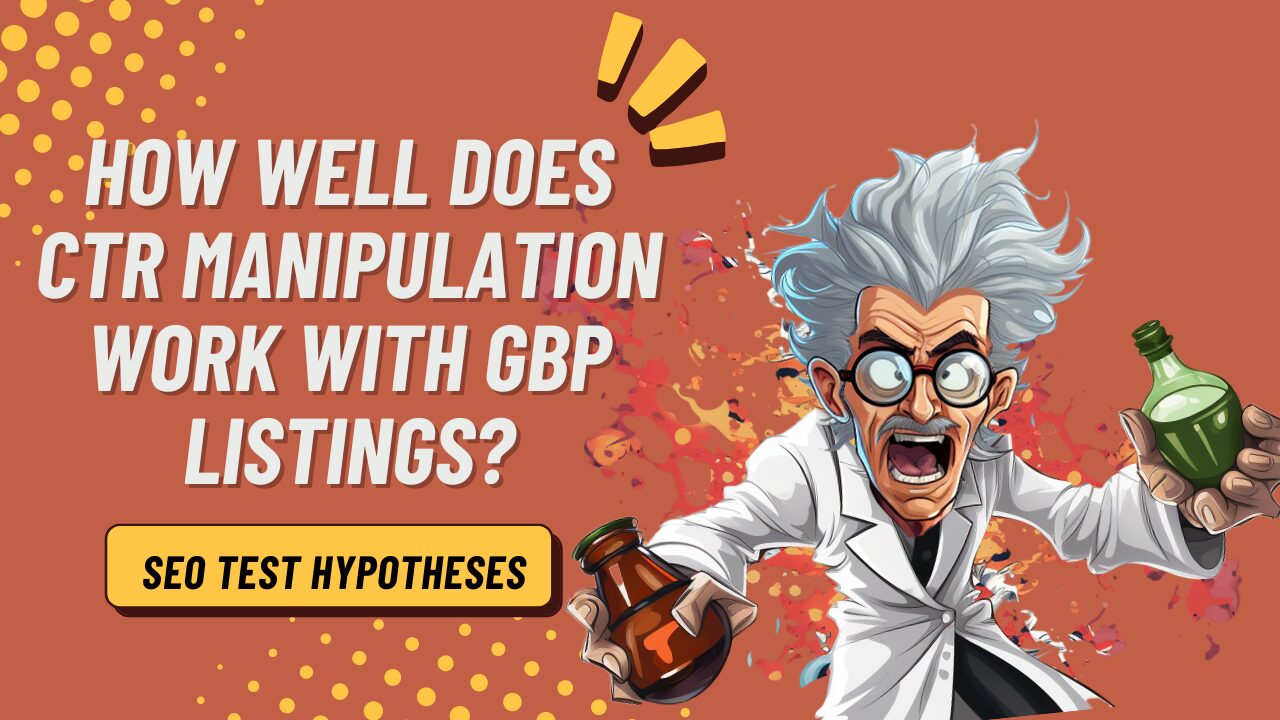The Ultimate Overview to Implementing Successful CTR Manipulation Techniques
The Ultimate Overview to Implementing Successful CTR Manipulation Techniques
Blog Article
Accomplishing Success With Targeted CTR Control
The optimization of click-through prices (CTR) is a critical undertaking for brand names intending to boost their digital existence and optimize interaction. Targeted CTR control encompasses an array of strategies, from data-driven advertisement placements to the development of compelling material customized to certain target markets.
Recognizing Click-Through Rates
Click-through rates (CTR) offer as a critical metric in electronic advertising, showing the performance of on-line content in driving customer involvement. This metric is determined by separating the variety of clicks an advertisement or link gets by the complete number of impressions, revealed as a percent (CTR Manipulation Service). A greater CTR shows that the web content resonates well with the target audience, prompting them to do something about it
Recognizing CTR is essential for marketing professionals intending to maximize their projects. Numerous factors influence CTR, including advertisement positioning, layout, and the relevance of the content to the target market's passions. Engaging headlines and visually enticing photos can substantially improve the probability of individuals clicking on a link.
Moreover, the context in which the content is offered plays a critical duty in determining CTR. Advertisements showed at tactical times or during pertinent occasions are much more most likely to record interest. By examining CTR information, marketers can determine patterns and locations for renovation, enabling more targeted approaches. Ultimately, a comprehensive understanding of CTR encourages marketers to fine-tune their techniques, making certain that electronic campaigns accomplish their desired end results efficiently.
Significance of CTR Adjustment
In the competitive landscape of digital advertising and marketing, the manipulation of click-through rates (CTR) has actually become an important approach for enhancing campaign efficiency. CTR functions as an essential efficiency indication, reflecting the performance of on the internet advertisements and material in drawing in customer involvement. A higher CTR not only represents higher passion but also can cause boosted search engine rankings and lower cost-per-click (CPC) prices, thus maximizing total advertising and marketing budgets.
The relevance of CTR manipulation exists in its ability to educate marketing professionals regarding client choices and habits. By assessing CTR information, businesses can identify which elements of their campaigns resonate most with their target audience. This understanding permits even more enlightened decision-making and the appropriation of sources to one of the most reliable networks.
Furthermore, efficient CTR control fosters an affordable advantage. Hence, grasping CTR manipulation is not just beneficial; it is important for attaining continual success in digital marketing efforts.
Methods for Targeted CTR
Achieving targeted click-through prices (CTR) requires a strategic strategy that encompasses various methods customized to specific target market segments. One reliable strategy is enhancing ad placements by using data analytics to determine high-performing channels. By focusing efforts on these networks, marketing professionals can enhance visibility and boost engagement.
Another crucial approach is crafting compelling headings and calls to action (CTAs) A/B testing various variations can expose which mixes reverberate most with the target market, therefore driving higher CTR. Furthermore, including visual elements try these out such as distinctive images or videos can substantially boost charm, making web content much more shareable and appealing.
Personalization also plays an important function; making use of customer data to produce tailored content can foster a sense of significance, urging clicks. Leveraging social evidence with testimonials and user-generated web content can build trust fund, ultimately enhancing CTR.
Studying Individual Actions
 Comprehending user habits is essential for enhancing advertising strategies and boosting total efficiency. By evaluating exactly how customers engage with content, marketers can gain useful insights right into choices, inspirations, and pain factors. This understanding makes it possible for the development of more targeted projects that reverberate with particular target market sectors.
Comprehending user habits is essential for enhancing advertising strategies and boosting total efficiency. By evaluating exactly how customers engage with content, marketers can gain useful insights right into choices, inspirations, and pain factors. This understanding makes it possible for the development of more targeted projects that reverberate with particular target market sectors.To successfully analyze user habits, various tools and techniques can i loved this be employed. Web analytics systems give information on user engagement metrics such as click-through rates, bounce rates, and time invested in page. Heatmaps and session recordings enable marketers to envision customer communications, disclosing which elements attract interest and which may be neglected.
In addition, individual responses via studies and responses types can offer qualitative insights, enhancing the understanding of user sentiment and complete satisfaction. Segmenting individuals based on demographics, passions, and habits can additionally fine-tune targeting efforts, tailoring content to meet diverse demands.
Inevitably, continual analysis of individual actions is vital for adapting advertising and marketing techniques in real-time. As user fads advance, remaining in harmony with these changes makes sure that campaigns remain effective and pertinent, cultivating a much deeper connection with the target audience. This fundamental understanding sets the phase for the successful implementation of targeted CTR control techniques.
Determining Success and Readjusting Strategies
Measuring success in targeted marketing projects look at these guys calls for a calculated approach that incorporates efficiency metrics with continuous evaluation. Secret efficiency signs (KPIs) such as click-through rates (CTR), conversion prices, and client acquisition expenses must be monitored constantly to evaluate the performance of manipulation approaches. By establishing a baseline, marketers can examine modifications in CTR and determine trends that suggest effective engagement or potential imperfections.
On a regular basis evaluating these metrics permits for the timely modification of methods. For example, if a specific project shows a substantial drop in CTR, it might signal the requirement for innovative alterations or a reevaluation of targeting criteria. Employing A/B testing can even more refine approaches by contrasting variants of advertisements or touchdown web pages, giving insight into what resonates finest with the target audience.
Additionally, including qualitative responses via studies or user interviews can supplement measurable information, offering an extensive view of audience perception. Ultimately, the ability to iteratively evaluate and fine-tune techniques based on real-time data fosters a more responsive marketing technique, ensuring that projects continue to be straightened with service objectives and audience choices. This flexible method is important in attaining continual success in targeted CTR control.
Conclusion
Finally, targeted CTR adjustment is vital for optimizing electronic advertising efforts. By understanding click-through prices and employing strategic methods, brands can effectively improve user involvement and drive conversions. Constant evaluation of individual actions and thorough dimension of performance indications assist in timely changes, making sure alignment with customer choices. Eventually, successful CTR control not just boosts presence however also fosters depend on and trustworthiness, thereby adding to continual growth in affordable markets.
 Targeted CTR manipulation includes a range of techniques, from data-driven ad placements to the development of engaging material tailored to certain audiences.Click-through rates (CTR) offer as an essential statistics in digital advertising, showing the effectiveness of on-line material in driving customer interaction. A higher CTR suggests that the content reverberates well with the target audience, prompting them to take activity.
Targeted CTR manipulation includes a range of techniques, from data-driven ad placements to the development of engaging material tailored to certain audiences.Click-through rates (CTR) offer as an essential statistics in digital advertising, showing the effectiveness of on-line material in driving customer interaction. A higher CTR suggests that the content reverberates well with the target audience, prompting them to take activity.CTR serves as a key efficiency indicator, mirroring the effectiveness of on-line ads and web content in drawing in user interaction.In conclusion, targeted CTR adjustment is crucial for optimizing electronic marketing initiatives.
Report this page